"Tomorrow we will go to Karangasem for a ceremony. There may be some opportunities to photograph trance" said Mr. T, my friend, fellow photographer and guide into the world of Balinese "Niskala" (the unseen). Together we had attended several gatherings where people had fallen into trance during previous visits to the island and I was excited at the opportunity to witness and photograph more.
In 1957, the late Anthropologists Margaret Mead & Gregory Bateson traveled to the Indonesian Island of Bali to observe and document the island's culture, societal organizations, art & religious practices. Among the collected works gathered during their stay was a documentary film "Trance & Dance in Bali". The grainy black & white film depicts men & women in frenzied dance and attempting to stab themselves with fierce looking curved-bladed daggers known as "Kris" or "Keris" but unable to injure themselves while in a state of trance.
In the 30 years I have been visiting Bali, most of my time has been spent searching out their Hindu religious ceremonies, their Shamen & Balians (healers) and other activities that would largely fall into the category of "mystical" by western thinking. In Balinese culture, however, the unseen plays an equal role and is given at least as much attention as the visible world. Great energy, time and attention is devoted daily to appeasing and placating an enormous pantheon of spirits & Gods. In doing so, the Balinese believe that they help to maintain the balance between good vs. evil, bringing order to their world and to ours.
Trance phenomenon has been something that has held special interest for me. Hearing about these strange rituals for many years, it wasn't until recently that I have had the opportunity to see and document the activity. In trance, certain members of the community are prone to being "inhabited by spirits"... a sort of "possession" in which the spirit enter the body and communicates through the possessed. Sometimes, when sickness is an issue, for example, a spirit will enter a trancer, usually a Balian (healer), and prescribe proper offerings, etc. in order to restore the spiritual balance of the ill. In rituals such as the ones documented by Mead and Bateson, and in the images I have captured below, the individuals in trance become very rigid, their every muscle tensing, eyes glazed over. Often, those individual in trance will perform ritual dances to their gods, sometimes, animal spirits will take over the body and the individual will mime animal movements and sounds. Almost always during these rituals, men & women alike will make attempts at ritual self-mutilation, turning the large Kris daggers on themselves, beating their upper forearms with the blasé, raising welts and drawing blood in a frenzied activity, then attempting to stab themselves with the pointed blade of the daggers, though while in trance, they are protected and unable to pierce the chest even though great pressure is obviously being applied.
Arriving at the small mountain village of Selumbung, in the Regency of Karangasem, we were met on the road leading to the main temple by a number of other followers and photographers all gathered for the annual ceremony "Ngusaba Pusa" in which the village ancestors are honored. Even before we began walking towards the temple gates a woman, obviously in trance, approached us then passed and went to greet the village "Barong", the mythical beast representing good and positive forces. This was looking promising, I thought as we entered through the temple gates and into the main courtyard. A large group was already assembled and a dozen or so people were already falling into trance and dancing around a smoky fire, aided by the hypnotic sound of the village gamelan orchestra and a man wearing the mask and costume of "Rangda", a representation of the evil witch mother of Balinese mythology. Attendant priests dressed in white were ever present, armed with holy water and incense to watch over those in trance and keep order. A few moments later, a procession of men bearing bamboo palanquins with boxes housing the effigies of ancestral gods approached and entered the temple, along with the Barong and it's tranced escort. As the gods and Barong passed through temple gates, more and more attendees fell into trance, dancing, attempting to self-mutilate until the entire inner courtyard was filled with a euphoric delirium. The trancing continued for the three hours we remained and was still going on when we departed the hillside village. Mr. T did not disappoint in bringing me to this village... he never does.
Below are photographs shot while in the midst of the ceremony. I cannot explain in great detail what is actually taking place or why. The best explanations I have read comes from Fred Eiseman, Jr.'s, "Bali: Sekala & Niskala Vol I: Essays On Religion, Ritual, and Art". Here, Eisman describes the trance phenomenon as a dissociative state, not unlike sleepwalking or some other form of hysterical phenomenon such as hysterical seizure or paralysis. The person in trance, while not completely unaware of their surroundings, appears to be in a state similar to being hypnotized. Some people are very prone to trance and fall into the state spontaneously. Others may requite other stimuli before falling... the approach or proximity to ancestral gods, proximity to an "energized" Rangda or Barong or the repetitive sound of the gamelan orchestra. In the case of Balian healers, meditation can induce trance. Others are immune to trance and are often relegated to the position of attendants and guardians, assisting in keeping things orderly and non-violent during the ritual. While in trance, some individuals appear to be in a state of euphoric bliss, other appear to be suffering from terrifying visions. Much of their movements in mass trance ceremonies such as this one are ritualistic, as with the dancing and attempts at self-mutilation with Kris'.
Since my departure from Bali only a week ago, this village and many others in the Karangasem Regency are under threat of a major eruption of Bali's sacred volcano, Gunung Agung, the first since 1963. As of today, over 74,000 villagers have been evacuated to shelters, public buildings, homes of family and friends as they await the imminent eruption. My prayers go out to all...
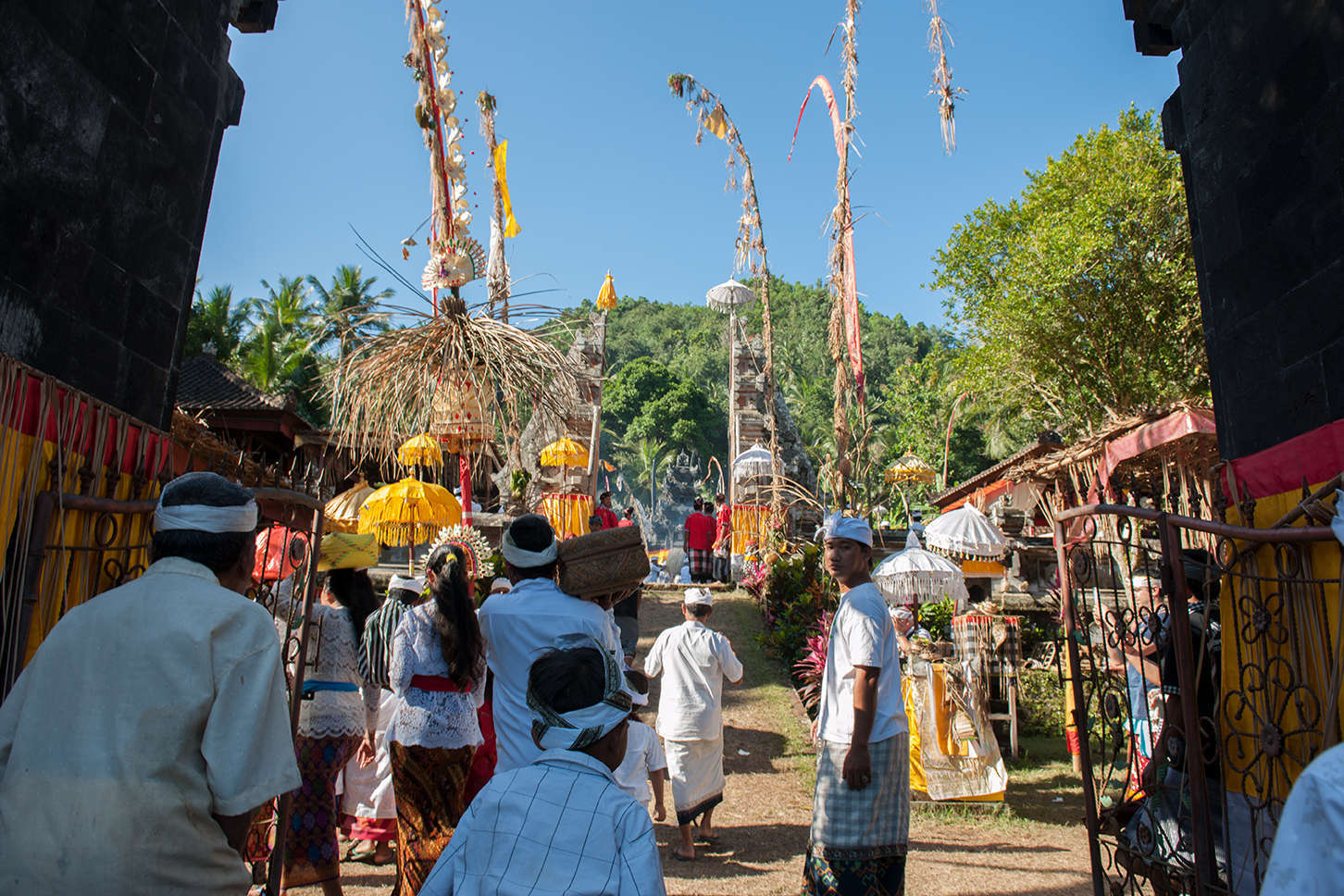

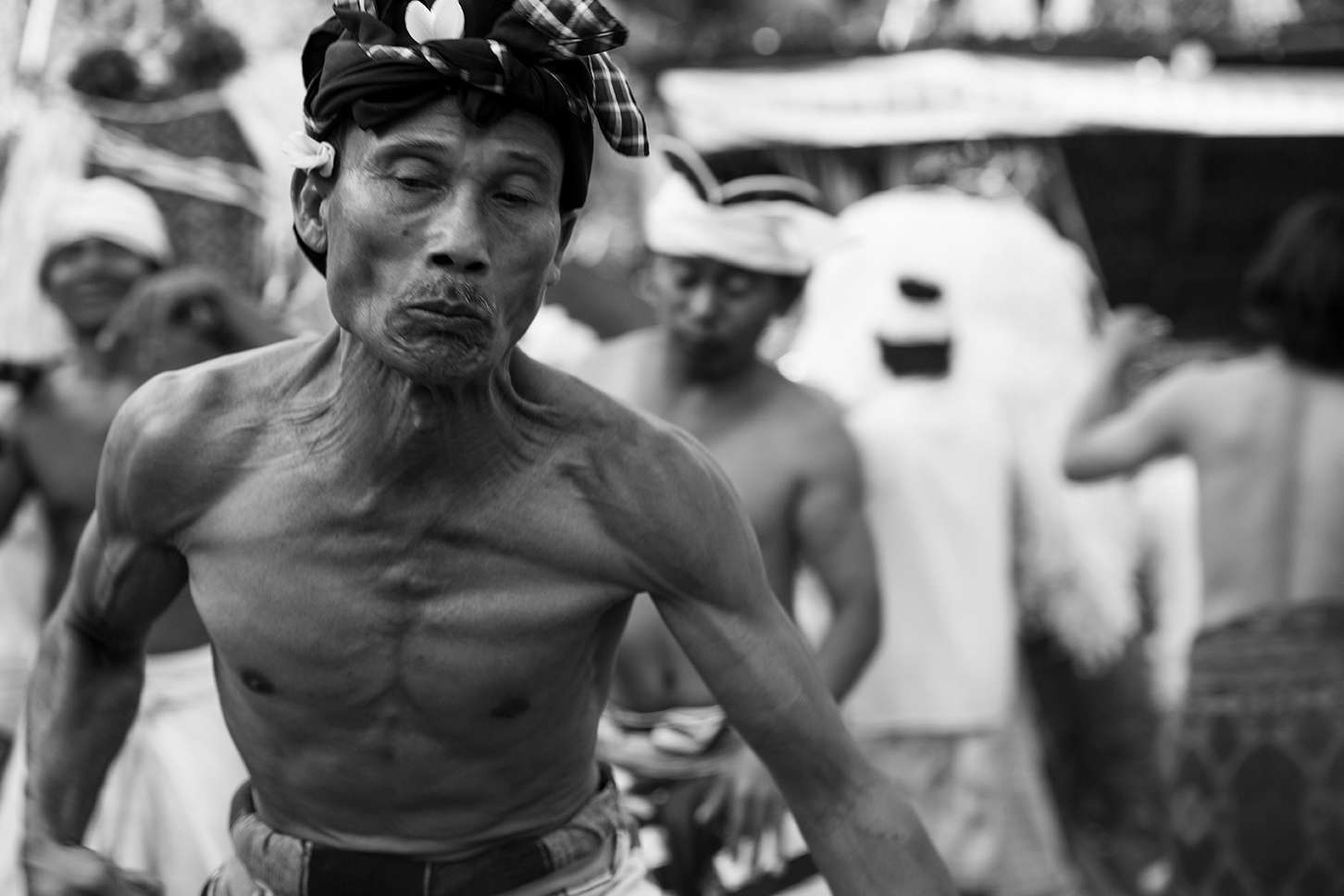

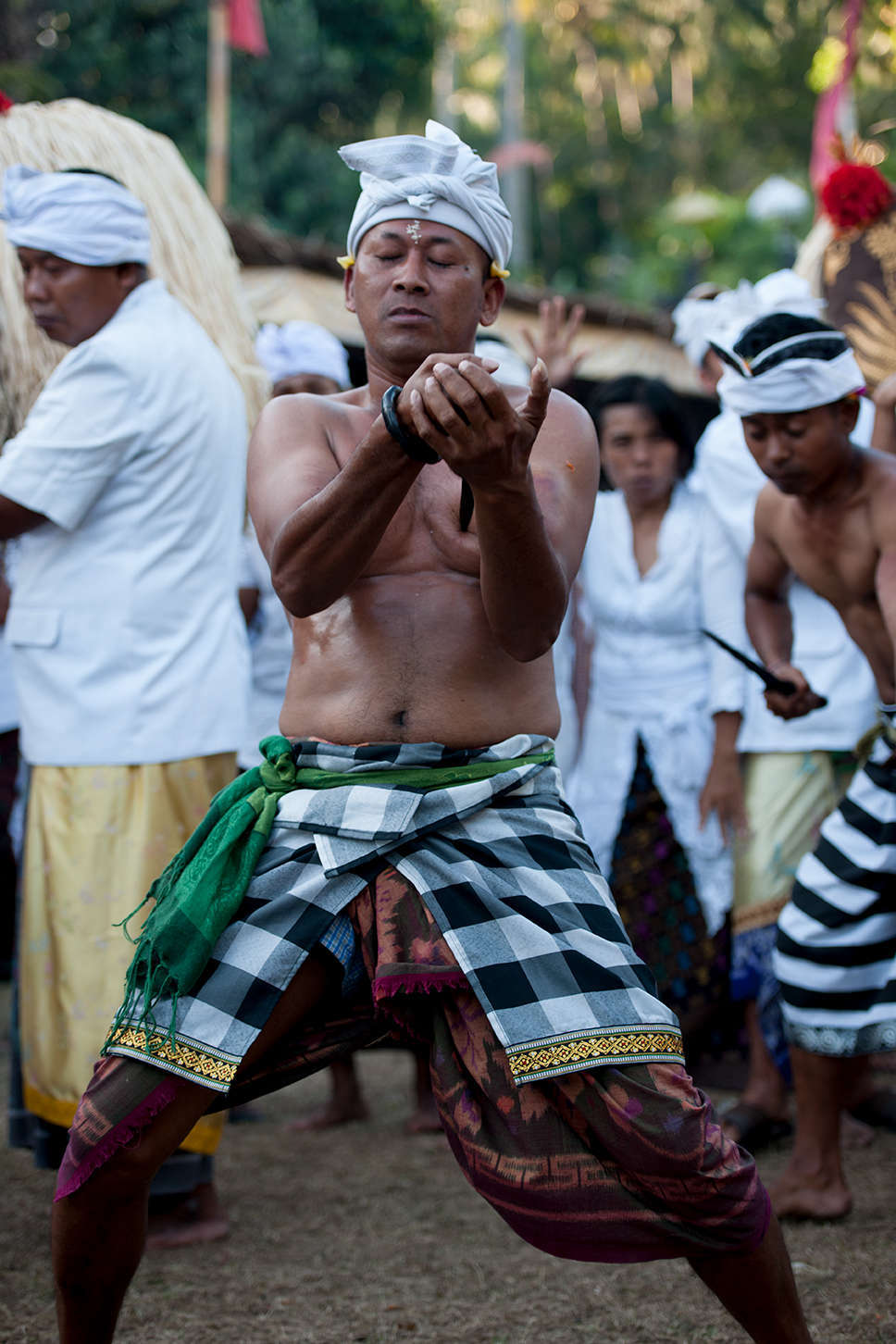


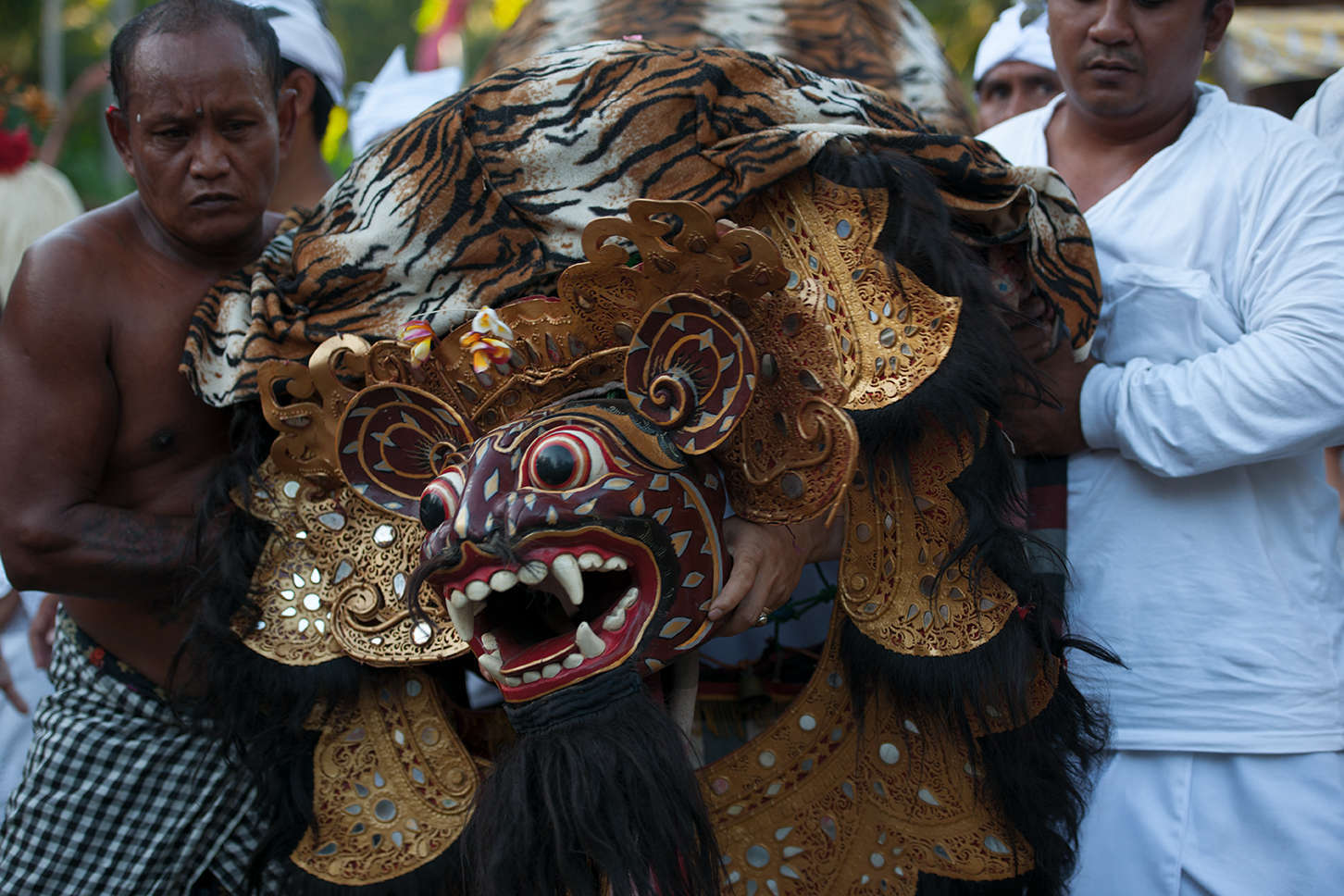
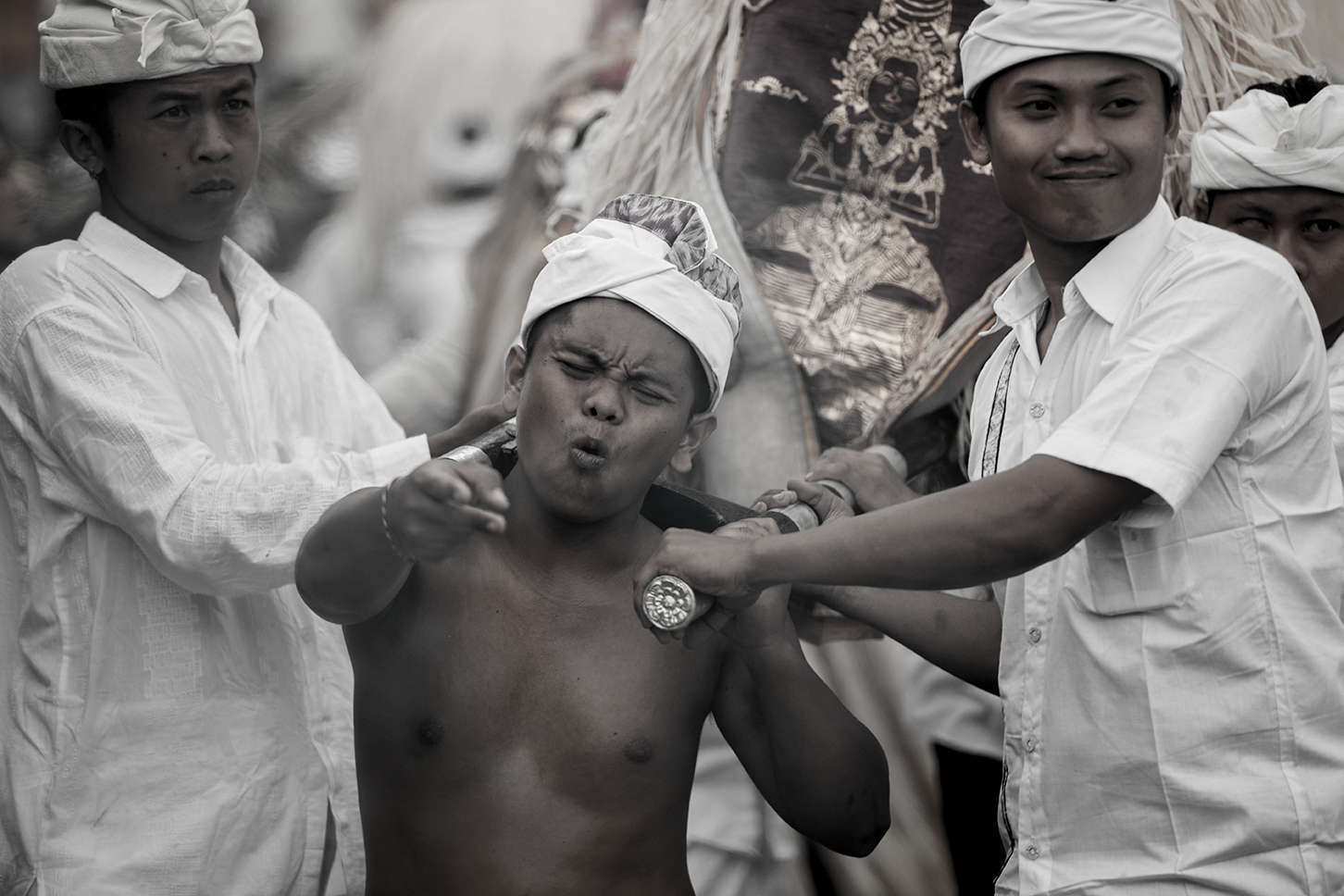

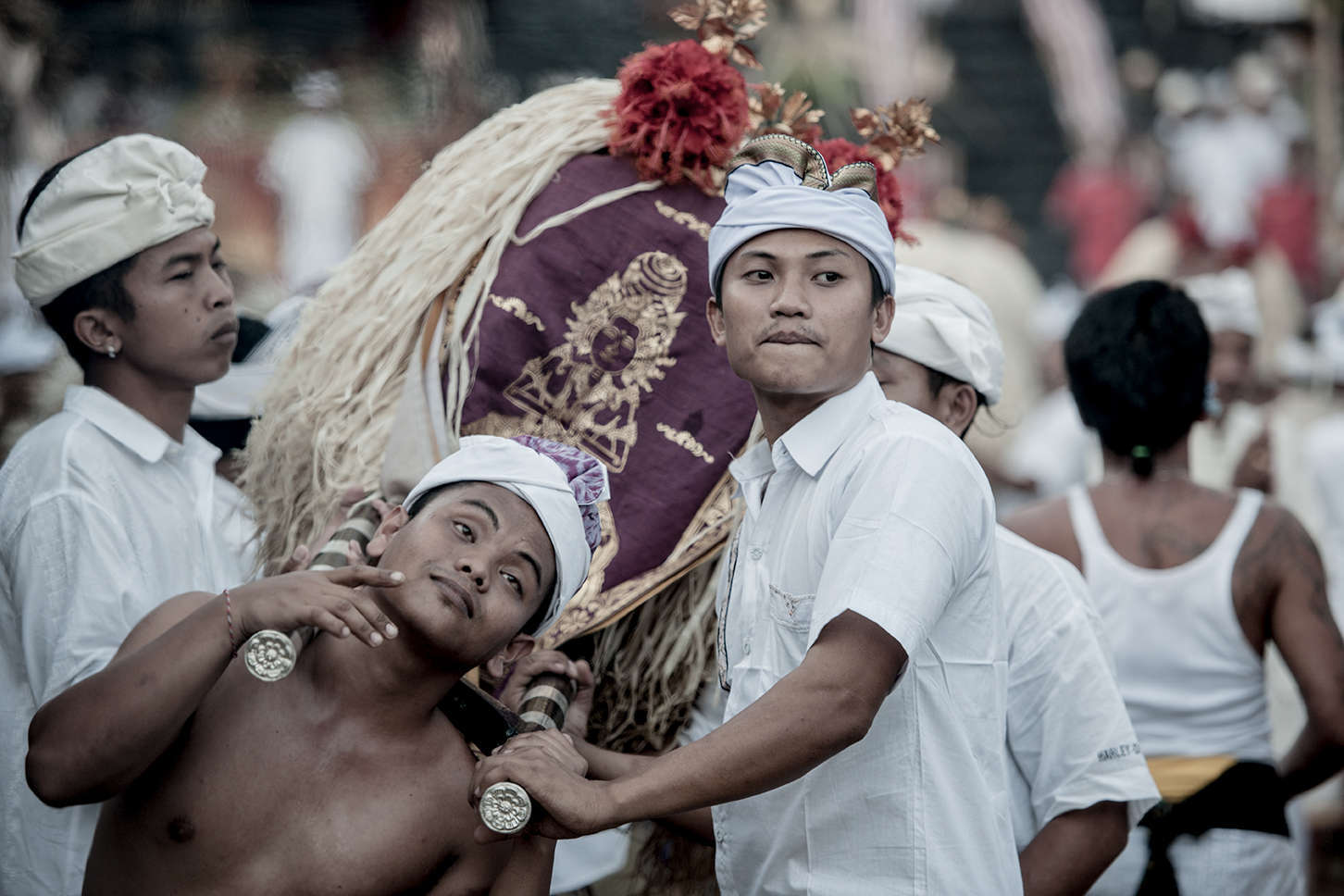
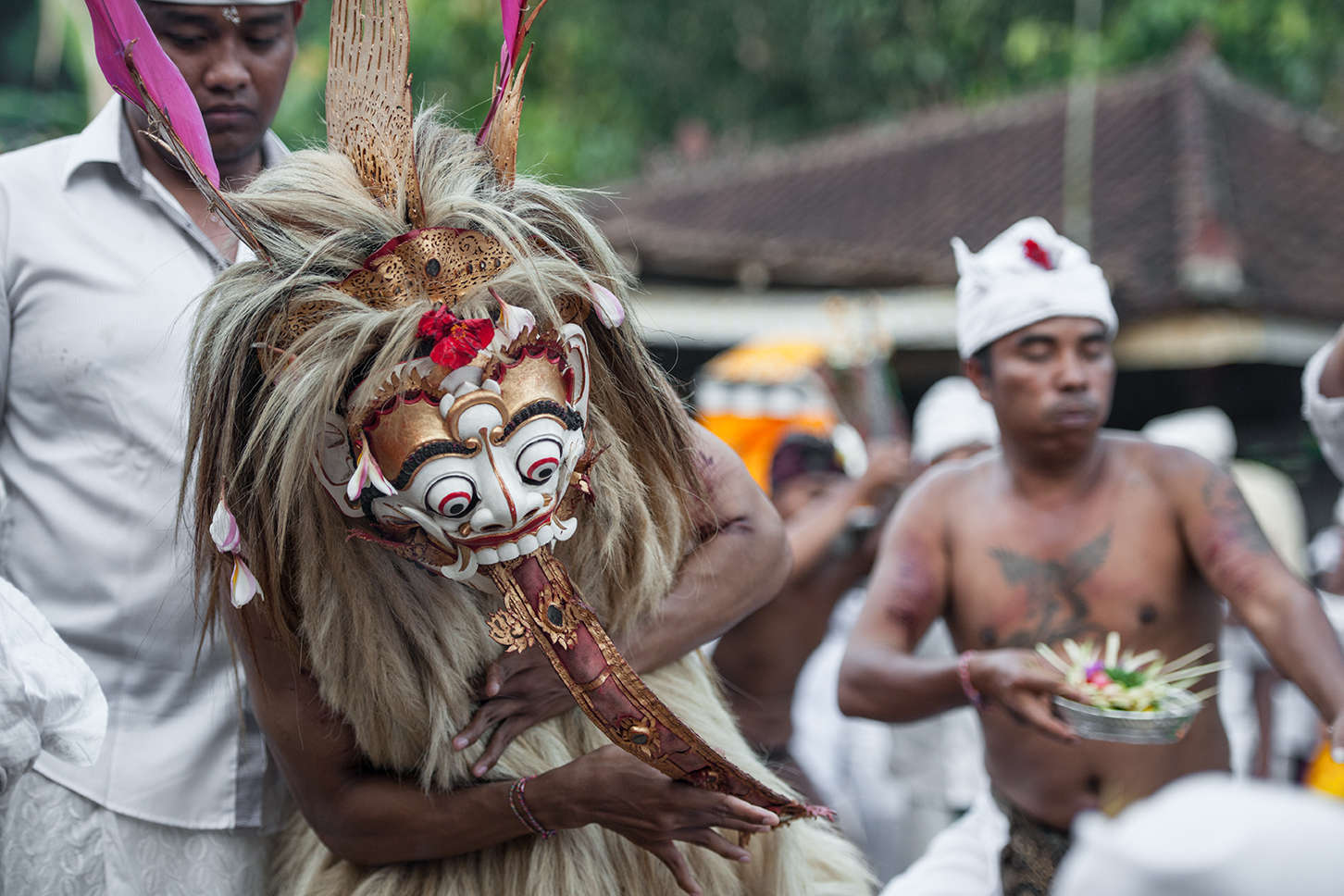
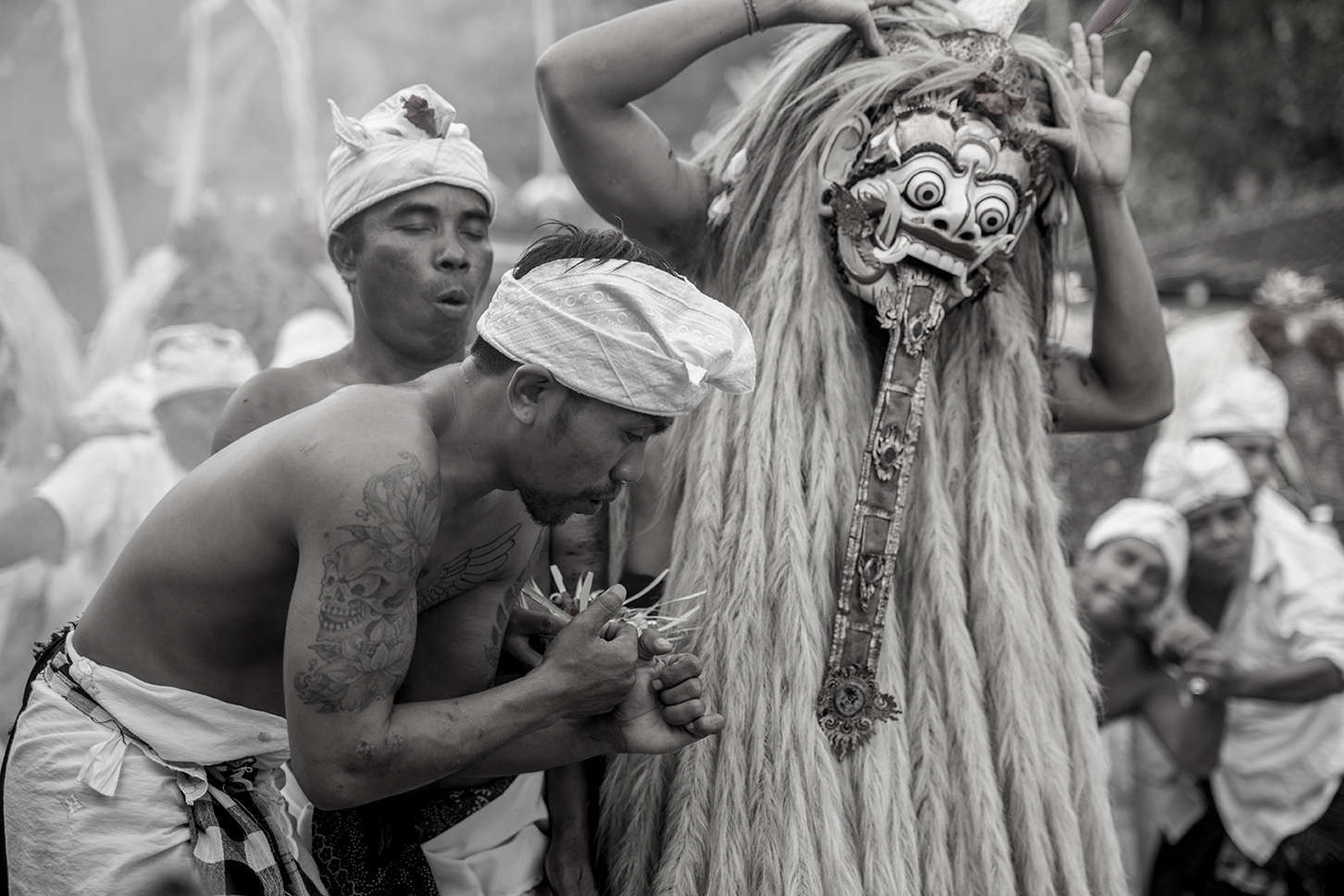
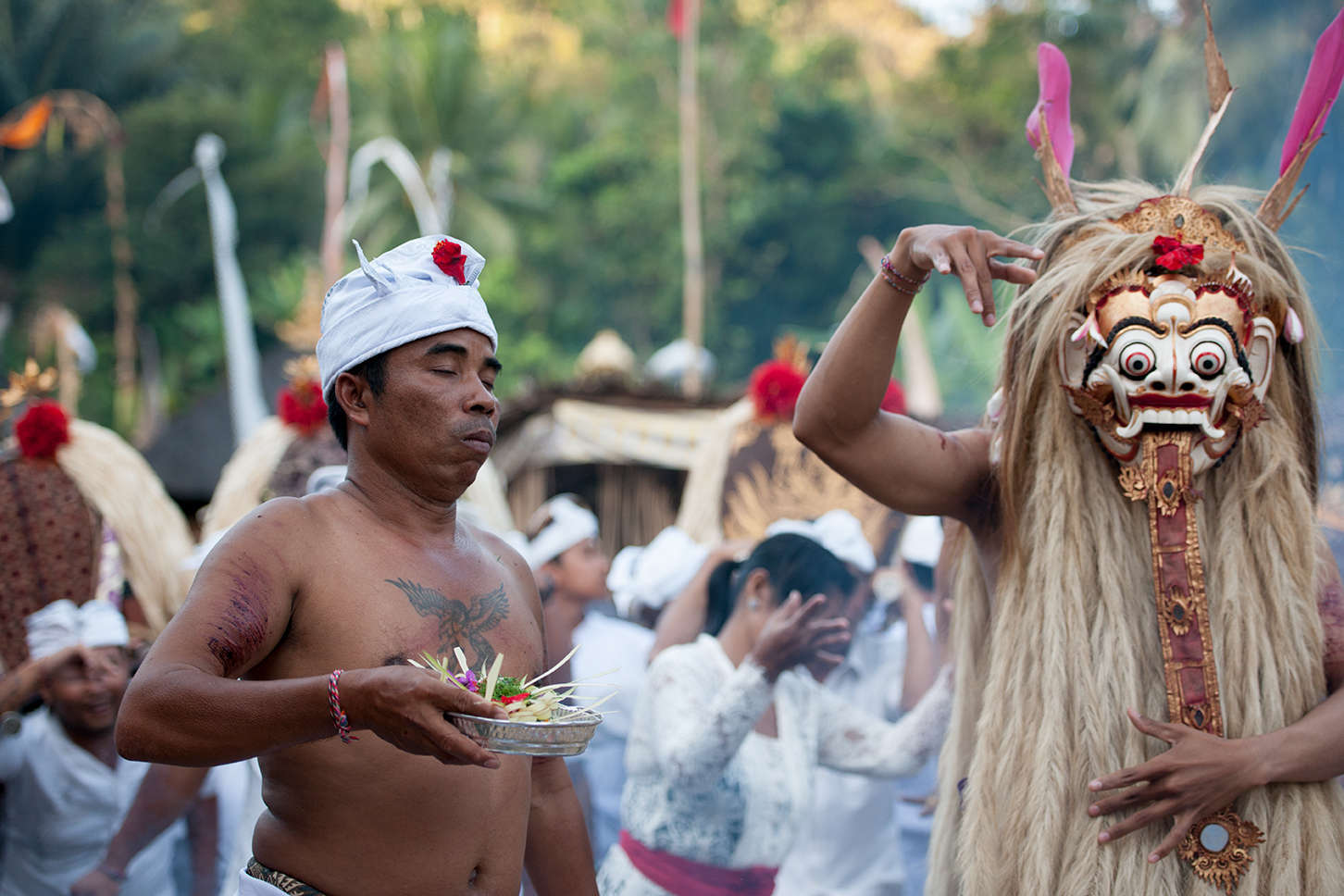





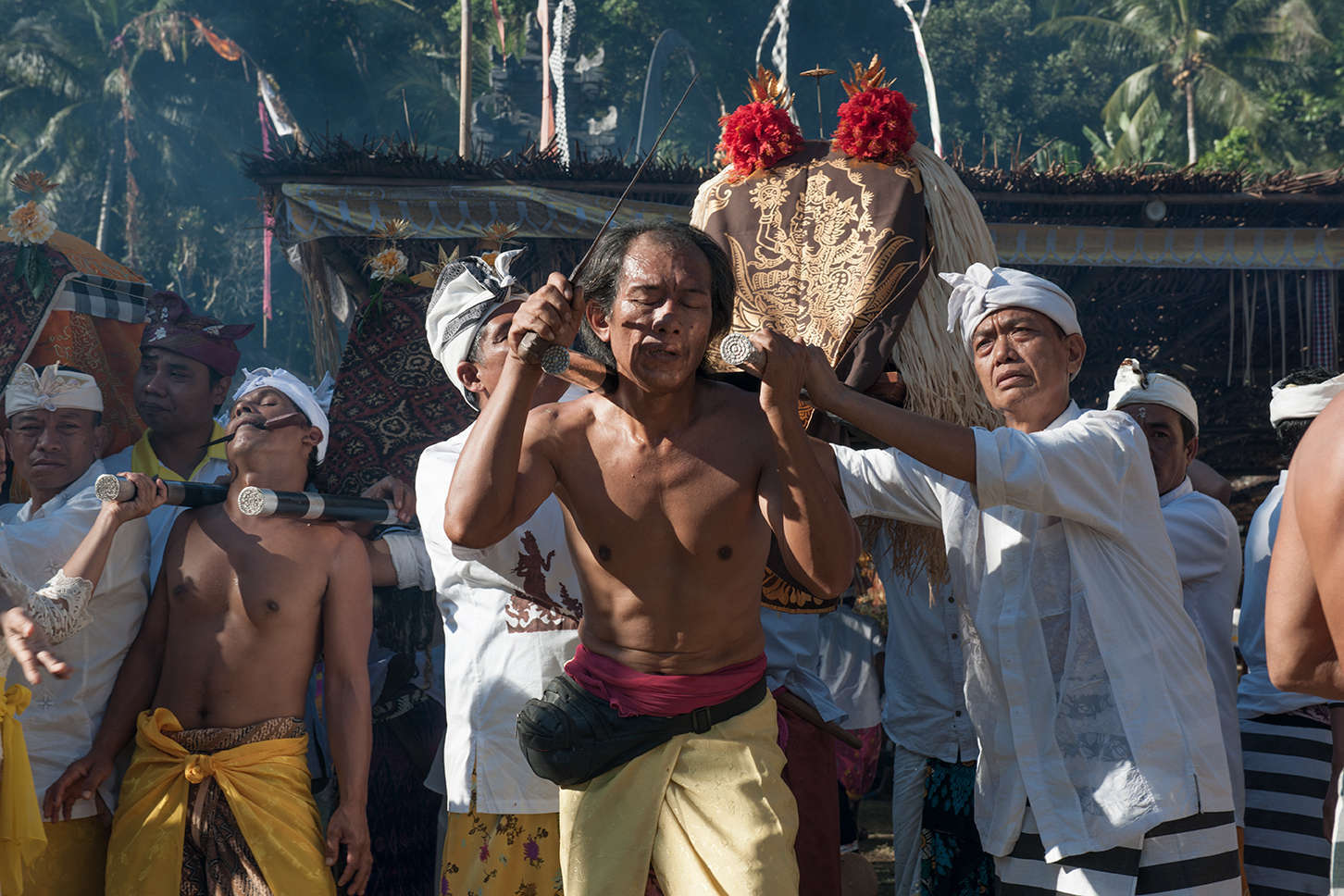
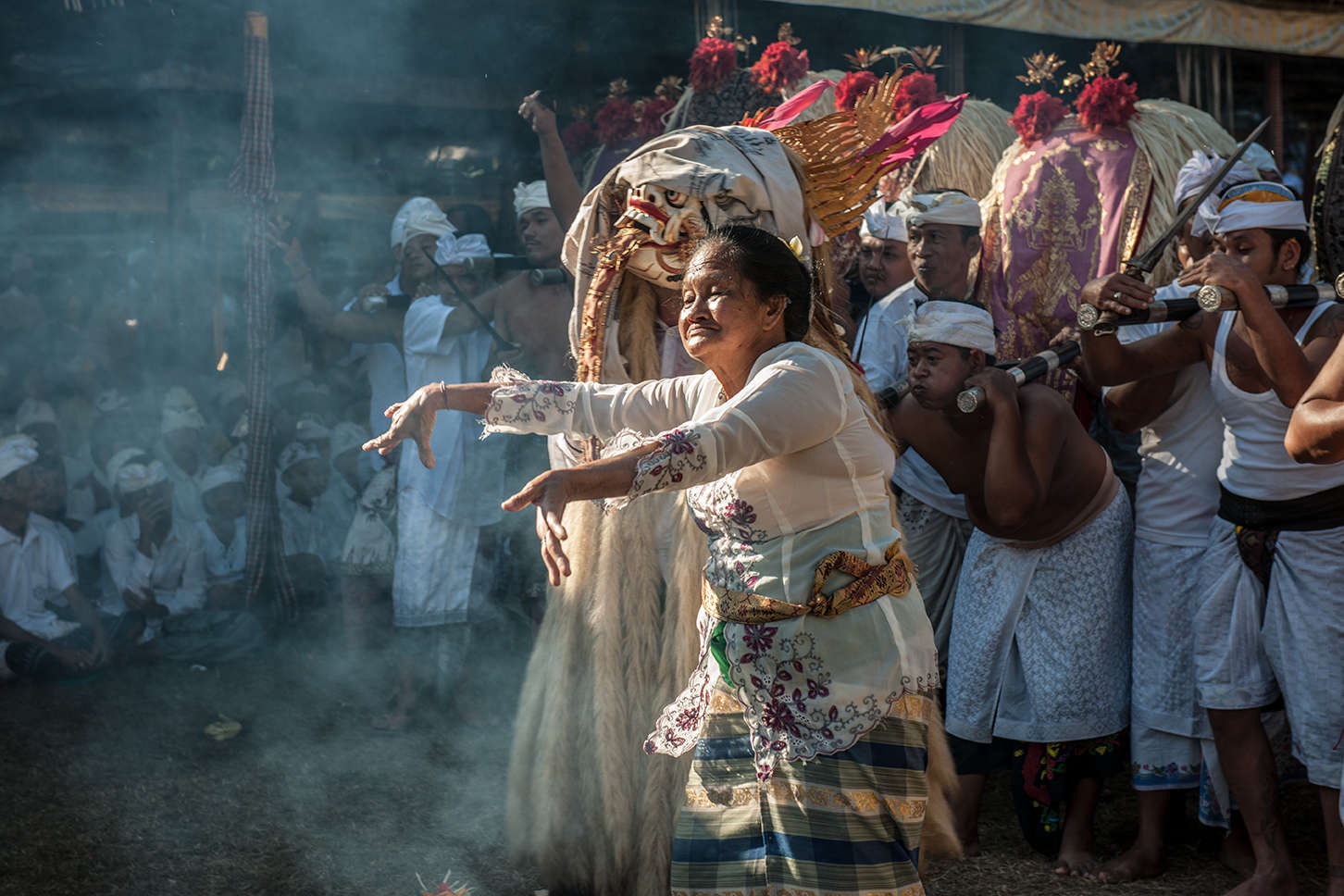

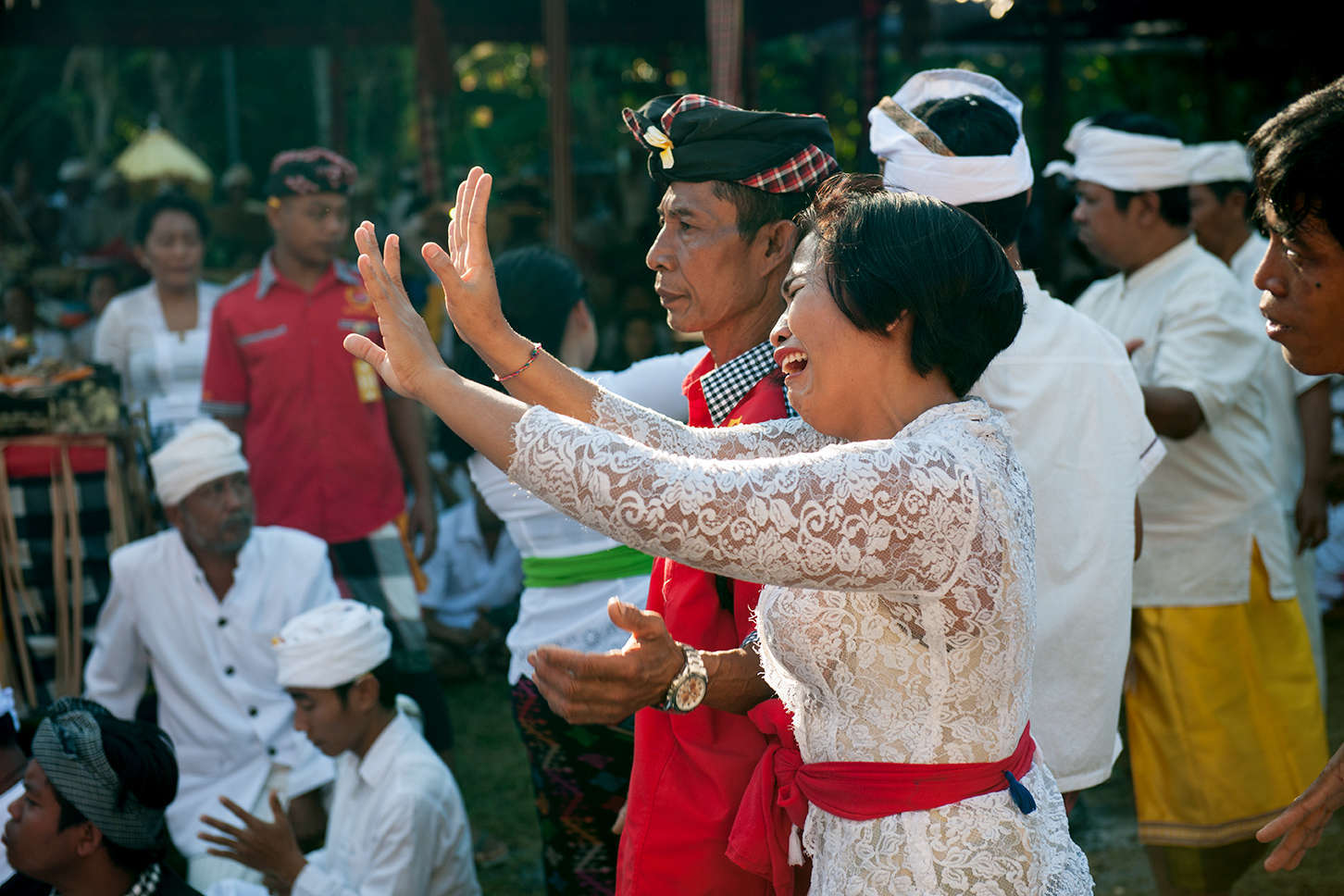


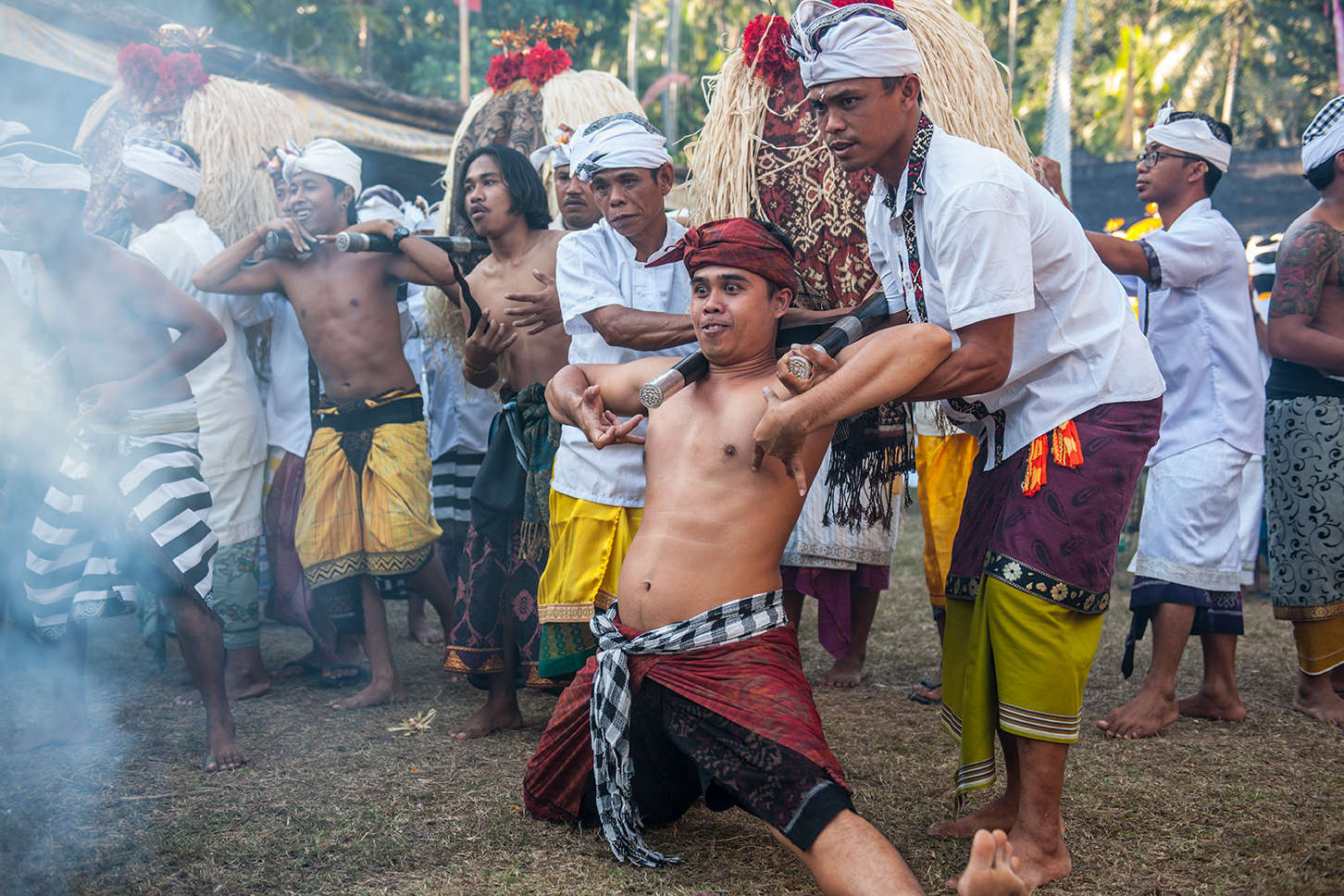


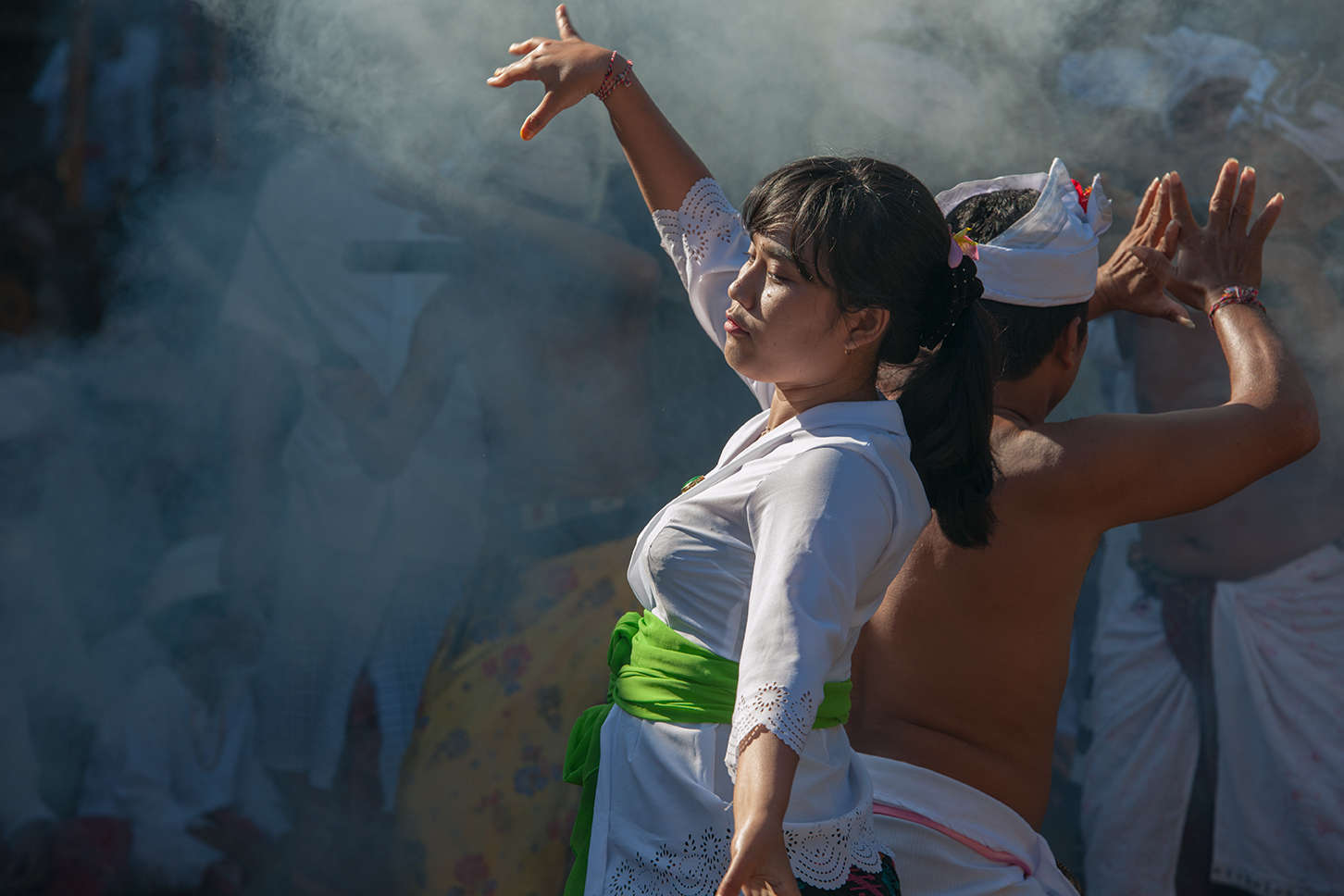

All Photographs ©2017 Tony Novak-Clifford
